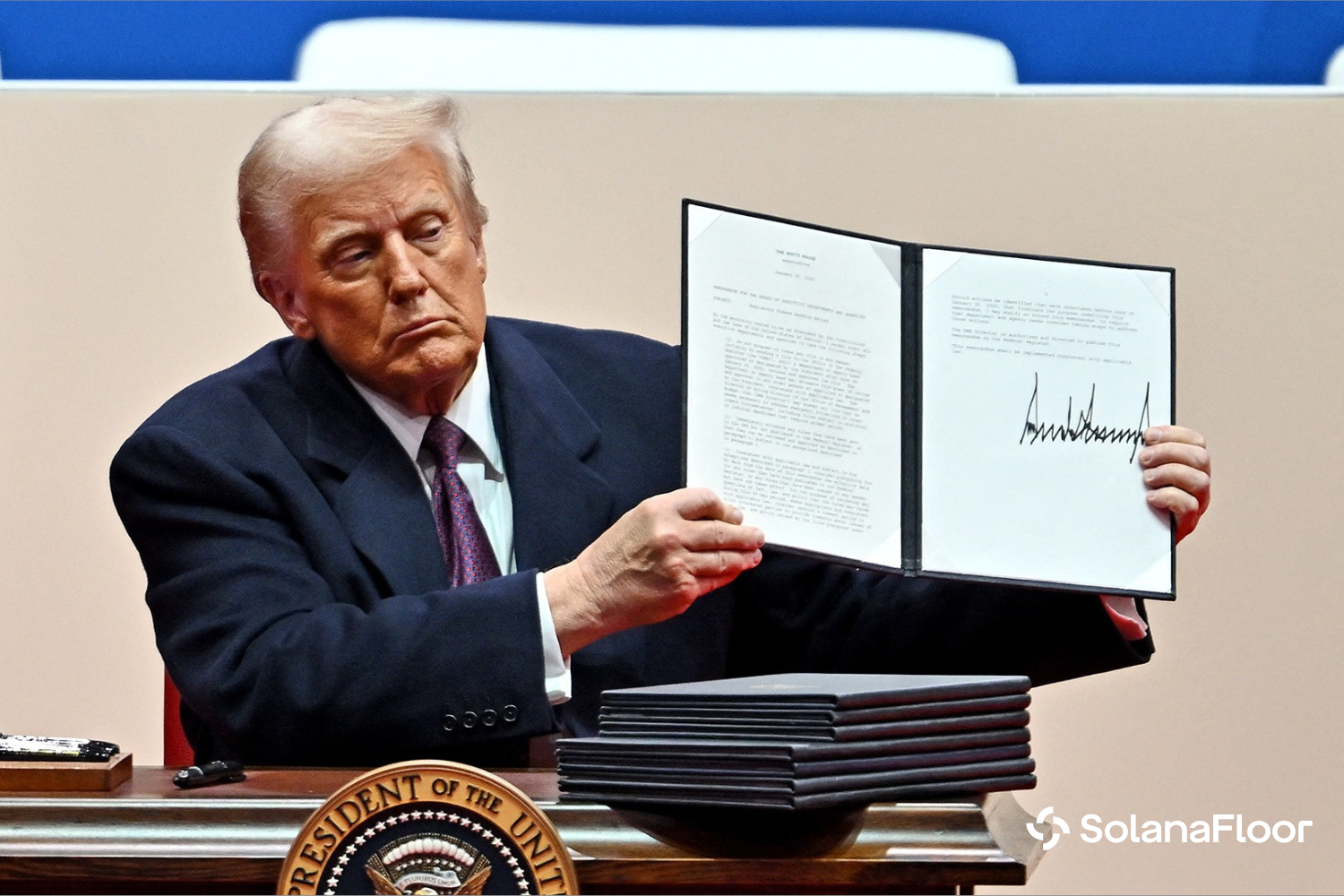
“Tons of Money Pouring In”: Trump Signs Executive Order Allowing Crypto in 401(k) Plans
New policy could unlock $12.5 trillion retirement market for digital assets.
- Published:
- Edited:
President Donald Trump has signed an executive order that opens the doors for cryptocurrency and other alternative assets to be included in 401(k) retirement plans. The move marks a significant shift in U.S. retirement policy and could reshape how Americans save for retirement. With more than $12.5 trillion in assets held in 401(k) accounts, the policy change carries wide-reaching implications for both traditional markets and digital assets.
The executive order directs the Department of Labor to reassess its prior guidance on fiduciary responsibilities under the Employee Retirement Income Security Act (ERISA). It also instructs the Securities and Exchange Commission (SEC) and other regulatory agencies to revise their rules to better accommodate alternative investments, including crypto assets.
In an August 7 interview with CNBC, Galaxy CEO Mike Novogratz emphasized the impact of broader access to digital assets through traditional financial vehicles. “As we're really broadening our reach through public equities into our asset class, you're just seeing tons of money pour in,” he said, referencing the executive order and its potential to accelerate institutional flows into crypto markets.
This policy follows closely on the heels of another significant regulatory milestone: President Trump’s signing of the GENIUS Act in July. Together, the GENIUS Act and the new executive order reflect a broad strategy to integrate digital assets into mainstream financial infrastructure.
Regulatory Shift and Market Opportunity
While crypto has never been officially banned in retirement accounts, previous Department of Labor guidance strongly discouraged fiduciaries from including digital assets. That guidance, issued in 2022, was fully rescinded earlier this year. Trump's new order goes a step further by calling for updated guidance that places crypto on equal footing with other alternative assets such as private equity and real estate.
Matt Hougan, Chief Investment Officer at Bitwise, noted that this move was about the government stepping back to empower individuals with the freedom to make their own investment choices.
More than 90 million Americans participate in defined-contribution retirement plans. Until now, access to crypto and similar assets has remained limited to wealthy investors and non-ERISA plans. The executive order seeks to change that by expanding access and encouraging diversification within retirement portfolios.
Tom Dunleavy, Head of Venture at Varys Capital, emphasized the significance of this shift in an X post, stating, "Crypto in 401ks is WAY WAY BIGGER news than the ETFs.”
The crypto market reacted positively to the executive order being signed, with Bitcoin hitting $117,500 shortly after, following a 24-hour low of $116,112.
What It Means for Solana
Given the risk-averse nature of retirement planning, analysts expect exchange-traded funds (ETFs) to be the first primary gateway for crypto exposure in 401(k) plans. $SSK, the first U.S. Solana staking ETF by REX-Osprey, continues to see strong inflows, with AUM reaching a high of almost $150 million in the first month of its launch.
Multiple Solana ETF applications are still pending SEC approval, some of which include staking features. The final deadline for a decision is October 10. However, we could see approval come as early as September.
If greenlit, Solana ETFs may become available for inclusion in 401(k) plans. This could bring significant new inflows into Solana-linked products, especially if plan sponsors seek diversified crypto exposure beyond Bitcoin and Ethereum.
Solana’s network performance and developer activity continue to position it as a leading blockchain platform. Should ETFs tied to Solana gain regulatory approval, the new executive order may provide these products with a pathway into retirement portfolios that were previously out of reach.
Implementation May Take Time
Despite the announcement, the actual process of integrating alternative assets into 401(k) offerings will likely take months or even years. Fiduciaries will still need to consider legal liability, risk profiles, and fee structures before adding these investments to plan menus.
Nevertheless, the executive order sets a clear policy direction. It signals that crypto is no longer outside the bounds of mainstream financial planning. Whether through ETFs or other vehicles, digital assets now have a clearer regulatory path into one of the largest pools of capital in the global economy.
As implementation unfolds, both investors and plan sponsors will closely monitor the evolution of retirement savings in the era of digital assets.
Read More on SolanaFloor
Orca DAO Proposes Deployment of 55,000 $SOL and 400,000 $USDC for Buyback Initiative
Solana Beats TradFi to Democratize Private Market Trading
Have You Checked Out the Solana Seeker Phone?



